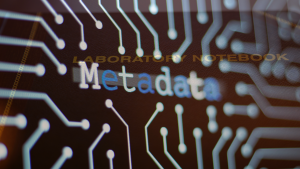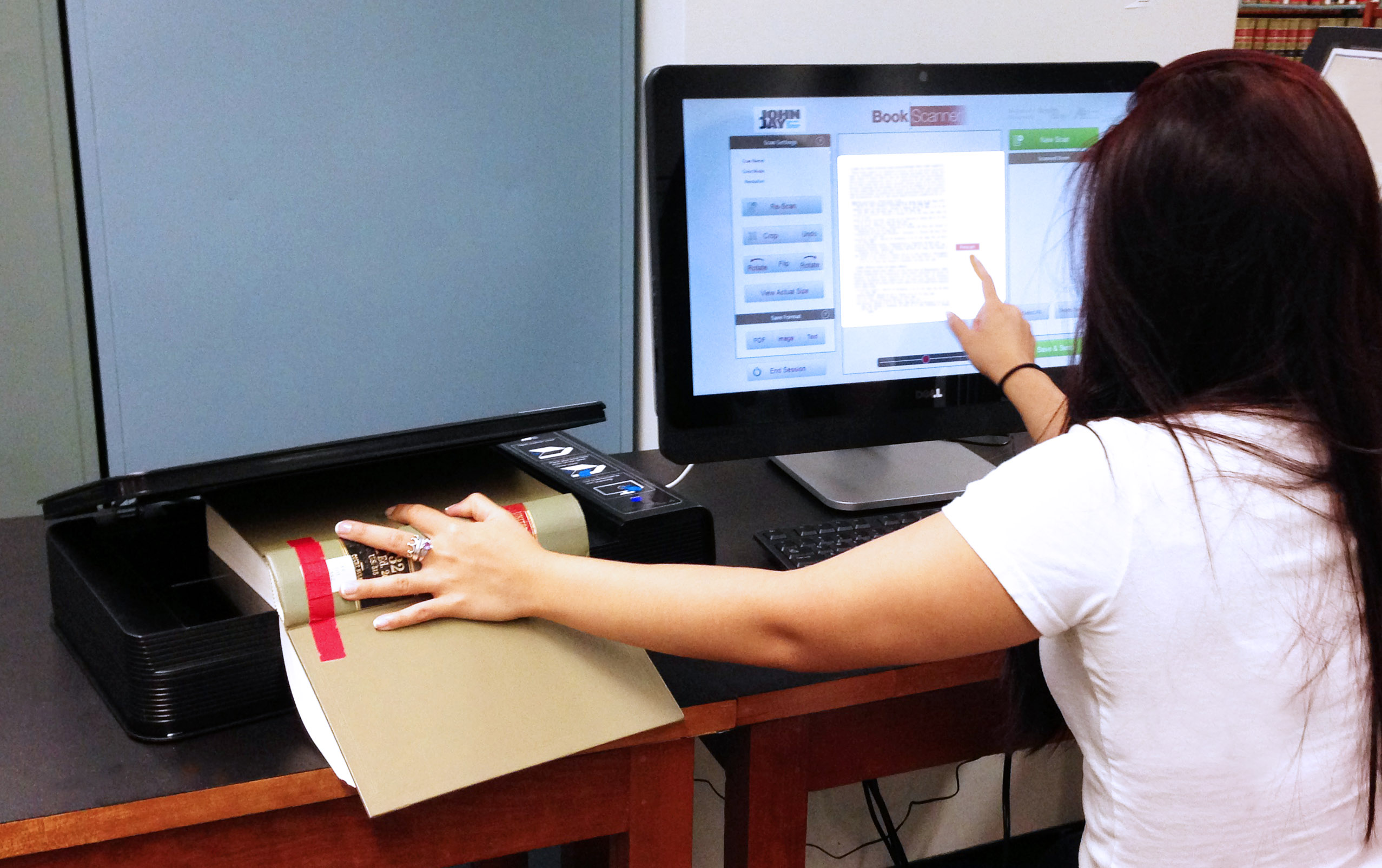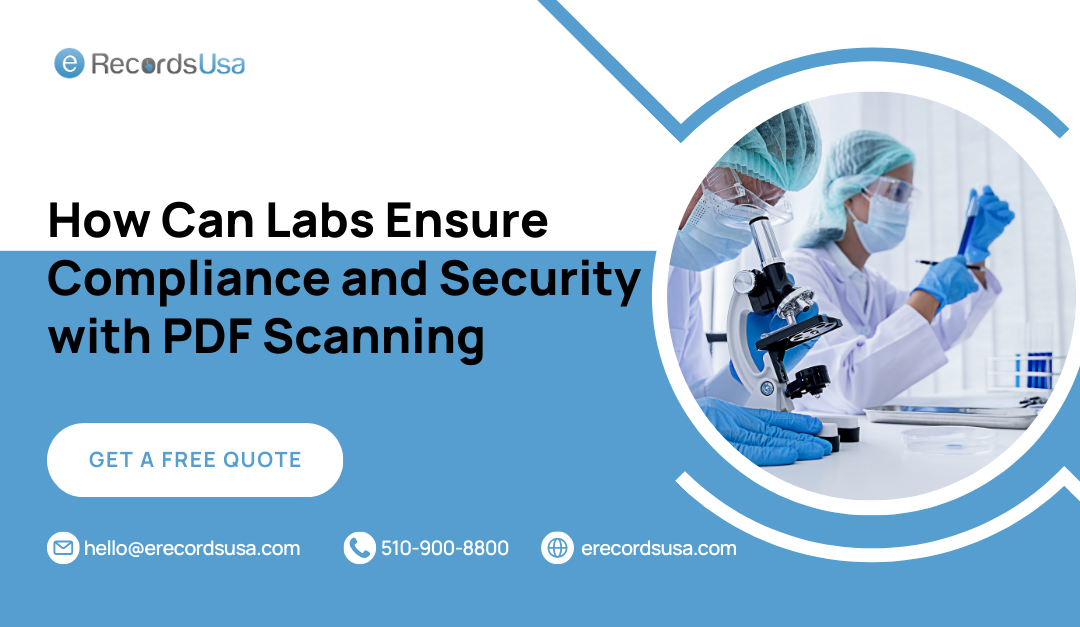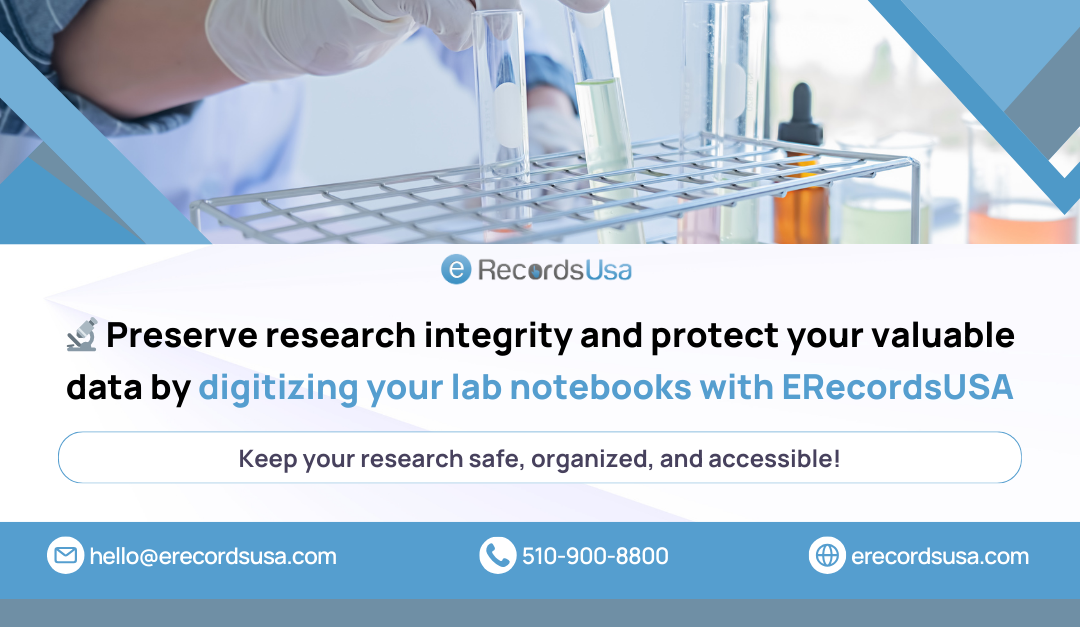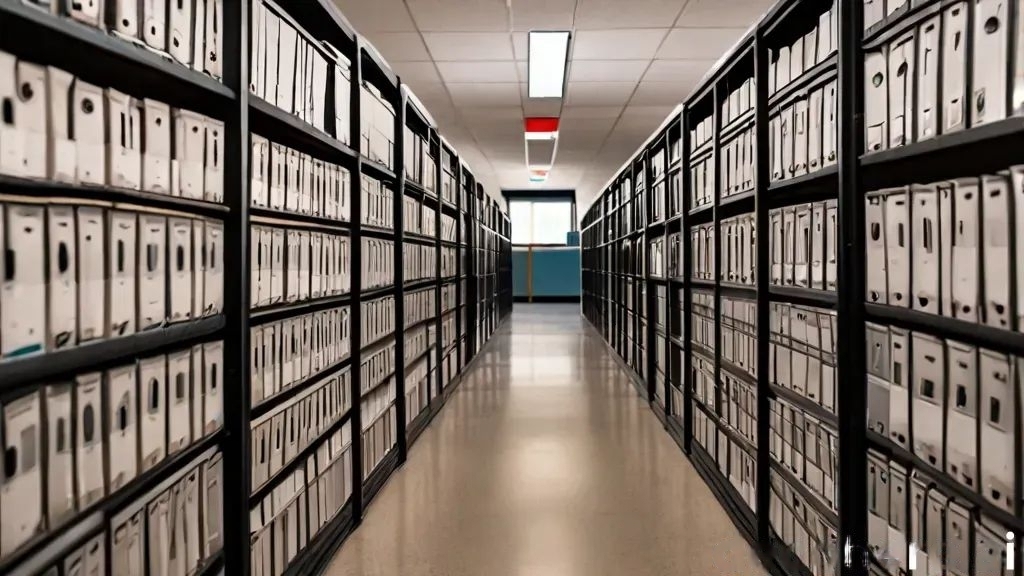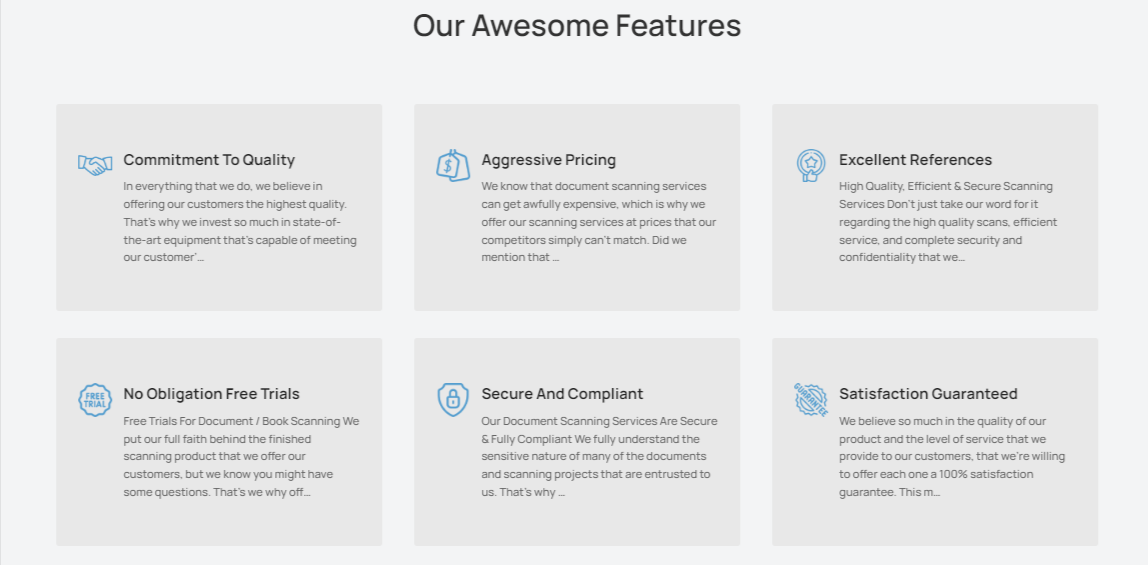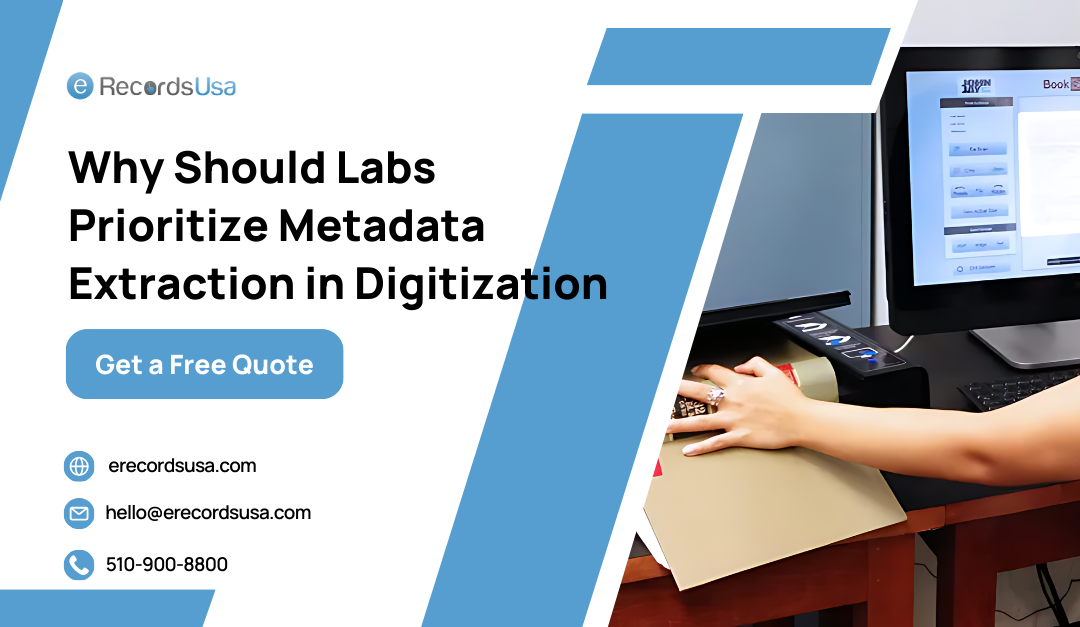
Why Should Labs Prioritize Metadata Extraction in Digitization?
In the digital transformation of laboratory processes, scanning lab notebooks is essential. Digitizing these records makes data more accessible, searchable, and manageable. However, metadata extraction is crucial to unlock the full potential of digitized lab notebooks. Metadata adds context, such as experiment details, dates, and researcher names, which enables effective categorization, searchability, and organization.
This article explores the importance of metadata extraction, its role in lab digitization, and best practices for labs to maximize efficiency.
What is Metadata and Why is it Important in Lab Notebook Scanning?
Metadata is structured information that describes and categorizes digital content. In lab notebook scanning, metadata transforms scanned documents into searchable and organized assets by capturing essential details like experiment names, dates, researcher details, and project codes.
- Facilitates Searchability: Metadata tags scanned notebooks with keywords, making it easy for researchers to locate specific documents.
- Enhances Organization: Proper metadata ensures that digitized lab notebooks are well-organized, simplifying data retrieval and storage.
- Supports Compliance: For labs in regulated industries, metadata enables precise tracking of document creation, modification, and access, ensuring compliance.
- Improves Collaboration: Structured metadata allows for easy data sharing and collaboration across teams and departments.
Without metadata, scanned lab notebooks would remain static images, limiting their usability and value.
Key Types of Metadata in Lab Notebook Scanning
Different types of metadata enhance the functionality and organization of digitized lab notebooks:
- Descriptive Metadata: Includes titles, experiment names, researcher details, dates, and keywords to identify document contents, making large archives easily searchable.
- Administrative Metadata: Tracks document creation, access, and modifications, which supports data governance by monitoring document activity.
- Structural Metadata: Captures document organization, like section headers, tables, and diagrams, preserving the original format and aiding digital navigation.
- Provenance Metadata: Provides information on document origins, creators, and modifications, crucial for ensuring data integrity, especially in regulated industries.
By applying these metadata types, labs can efficiently organize, track, and access their digital notebooks, boosting research productivity and record-keeping.
How Metadata Extraction Works in Lab Notebook Scanning?
Metadata extraction typically relies on Optical Character Recognition (OCR) technology, which converts scanned images into machine-readable text. The process includes:
- OCR Processing: OCR software analyzes the document to convert text into digital form, making the document indexable and searchable.
- Metadata Tagging: Metadata extraction software identifies and tags key elements like dates, titles, or project names, categorizing scanned notebooks for easy retrieval.
- Automated Metadata Application: Advanced systems automate tagging, consistently applying tags such as researcher names and experiment dates without manual input.
This process turns scanned lab notebooks into interactive, searchable assets, enhancing data organization and accessibility.
Best Practices for Metadata Extraction in Lab Notebook Scanning
To ensure metadata accuracy and usefulness, labs should follow these best practices:
- Use High-Quality Scans: A high-resolution scan (at least 300 dpi) improves OCR accuracy, ensuring that text and diagrams are clearly captured.
- Leverage Automation: Automate metadata extraction to reduce errors. Configure OCR tools to identify essential fields like experiment names and dates, ensuring consistency.
- Establish Metadata Standards: Define standard metadata fields (e.g., researcher name, experiment date) for all lab notebooks to maintain a uniform structure and improve searchability.
- Regularly Review and Validate Metadata: Conduct regular checks to confirm metadata accuracy and completeness, preventing issues in data retrieval.
Following these practices ensures that digitized lab notebooks are organized, accurate, and easy to search, streamlining lab data management.
Common Challenges in Metadata Extraction and Solutions
Metadata extraction can present challenges, but labs can proactively address them:
- OCR Accuracy for Handwriting: Handwritten notes can be difficult for OCR to process accurately.
- Solution: Use advanced OCR tools tailored for handwriting and manually review metadata for accuracy.
- Incomplete Metadata: Important fields may be missed due to scan quality or document layout.
- Solution: Regularly review metadata for completeness and configure OCR tools to focus on critical fields.
- Inconsistent Metadata: Different teams using varying tags can complicate document organization.
- Solution: Standardize metadata tags and formats across the lab for consistency.
Addressing these challenges ensures a smooth and accurate metadata extraction process, improving organization and data management.
Ready to Enhance Your Lab’s Data Management with Metadata Extraction?
Transform your lab notebook scanning process with advanced metadata extraction that makes your data searchable, organized, and compliant with industry standards. eRecordsUSA specializes in high-quality lab notebook scanning designed to streamline your lab’s efficiency and data accessibility. Here’s how we excel:
- Precision in Metadata Extraction: Our advanced tools capture essential metadata—experiment details, dates, researcher names, and project codes—ensuring your lab notebooks are organized, searchable, and easy to retrieve.
- High-Resolution Scanning for Data Integrity: We use top-tier scanning equipment to capture every detail with clarity, making sure that all lab notes, tables, and diagrams are accurately preserved for future research and compliance.
- Automated Metadata Tagging for Efficiency: Leveraging automation, we streamline the metadata tagging process, reducing manual input errors and ensuring consistency across all scanned documents.
- Customized Solutions for Lab Needs: We provide flexible options tailored to the unique data management requirements of labs in various industries, ensuring that your metadata extraction and storage processes align with your research goals.
Compliance with Industry Standards: eRecordsUSA adheres to regulatory standards like HIPAA and FDA guidelines, implementing secure data handling and storage practices that keep your lab in compliance with data governance requirements. Contact eRecordsUSA today to see how our customized solutions can preserve your lab records and elevate your data management. Let us help you unlock the full potential of your digitized lab notebooks!

